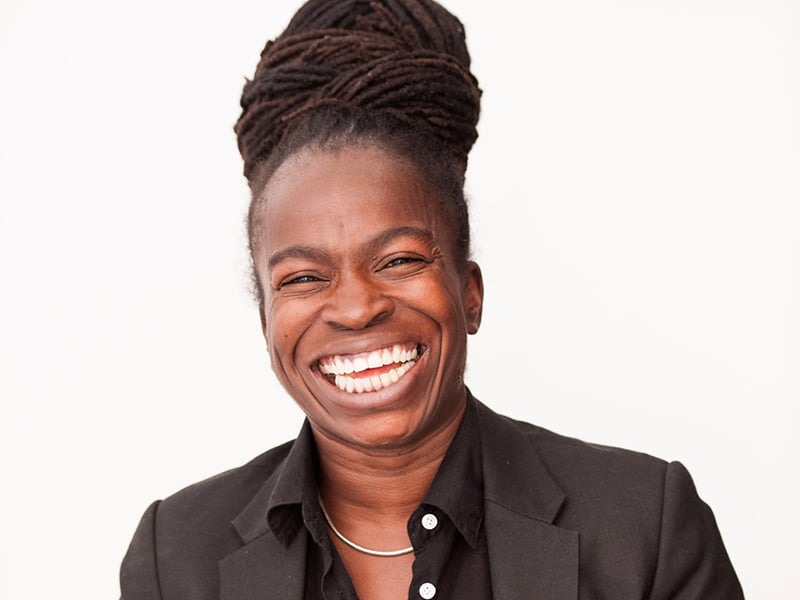An upcoming review of the government programs designed to drive better gender diversity in Australia’s science and technology sectors misses a bigger inclusion opportunity that would also help meet the new government’s tech jobs goal.
That’s according to TechDiversity director Luli Adeyemo, who says the announcement from Industry and Science minister Ed Husic on Tuesday bears the hallmarks of a government approach to diversity that’s limited itself before it begins.

The review by independent experts with the support of the Industry department will determine how existing government programs can be changed to drive greater diversity in Australia’s science and technology sectors.
It is also aimed to “reinforce the government’s commitment to supporting pathways for women and girls into science, technology, engineering and mathematics (STEM)” and is part of the government’s 1.2 million technology jobs goal, according to Mr Husic.
Ms Adeyemo fears the review will take too narrow a focus.
“Review [the programs] beyond STEM,” she told InnovationAus.com. “What can we be doing outside of STEM so that we’re creating an opportunity for all Australians, rather than those that have just got a strong science, engineering or mathematical background?
“Because if they review it just with a STEM lens, then we know we are not going to bridge the gap in regards to where we are, where we could be.”
According to the government announcement, the review will be of existing programs from the government’s Women in STEM program suite and, “where appropriate”, other government investments in science and innovation.
The findings will be compared to international efforts with recommendations to follow.
“The outcomes of the review will be public and we expect the independent panel to report by the fourth quarter of 2023,” a spokesperson for Minster Husic told InnovationAus.com.
“The review panel will be appointed by government and supported by the Department of Industry, Science and Resources. More details, including terms of reference and the review leadership, will be announced in following weeks.”
Ms Adeyemo, a technology diversity advocate and marketing industry veteran, said the government’s STEM focused announcement reads as if she “doesn’t belong” in the tech sector despite being a part of it for 30 years
The federal government’s Women in STEM program suite includes seven initiatives ranging from a STEM ‘toolkit’ for girls and education policies to million-dollar grants and co-funded university scholarships. Several of the programs are outsourced to science groups.
But the dial has not shifted in the last decade in terms of employment outcomes. Women accounted for 11 per cent of the STEM qualified occupations in 2009. In 2020 it had risen to just 13 per cent.
“Women remain chronically underrepresented in STEM, making up only 16 percent of people with STEM qualifications. Of First Nations people, only half a percent hold university-level STEM qualifications,” Mr Husic said.
“Renewed effort is required to address this problem and meet the growing demand for workers in the tech and science sectors.”
Science and Technology Australia (STA), which represents around 90,000 STEM workers and runs the government’s Superstars of STEM program welcomed the review and also backed a wide lens on diversity.
“To truly prosper, Australia’s economy urgently needs to attract and retain more women, First Nations people, regional Australians, culturally and linguistically diverse people, people with a disability and Australians from low socio-economic backgrounds into science and technology careers,” STA chief executive Misha Schubert said.
“To make major strides to address chronic gender inequity in sectors where that under-representation is most acute, you need consistent strong leadership, long-term investments at scale, strong buy-in, and a powerful resolve to drive cultural change.”
Australia’s chief scientist Dr Cathy Foley had called on Mr Husic to review the STEM programs at last week’s Jobs and Skills Summit.
“At the moment, we’ve got over 260 programs trying to encourage girls in [STEM]. I’ve been looking at this for nearly 40 years and we failed miserably,” she said.
“So, Mr. Husic, I’m putting it to you; maybe we should be reviewing that and seeing how can we actually do better work out what’s working and what’s not.”
A review of STEM programs to attract more women and underrepresented groups had been listed as an area for further work rather than an immediate action on the list of outcomes from last week’s Jobs and Skills Summit.
On Tuesday, Dr Foley welcomed the review.
“This review is timely. We know that despite years of effort, women are still significantly underrepresented in STEM occupations, and the problem goes all the way back to the mid-school years when the participation of girls starts to drop off,” she said.
“But this is more than just about representation. Getting the settings right for women and for other groups in our community, is about equity.
“It will also ensure we can fill the skills gaps in industries set to shape Australia over the next two decades, by making use of our full human potential.”
Ms Adeyemo said the government needs to be clear there is a wider diversity problem and opportunity beyond both STEM and gender, particularly if it is serious about its commitment to increase the tech workforce from 861,000 to 1.2 million by 2030.
“We’re not going to achieve that unless we diversify the workforce, and diversify there doesn’t just mean traditional engineering, coding type roles in tech. We need everything.
“We need marketing people, we need people who are really good communicators, we need accountants, we need the full gambit.”
“But as an industry, we have an identity crisis that people outside of tech wouldn’t consider a career in tech.”
Do you know more? Contact James Riley via Email.

